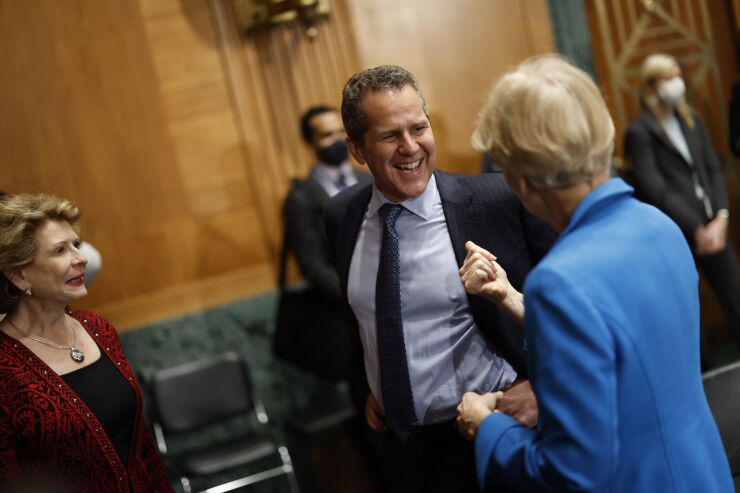
Federal Reserve Vice Chair for Supervision Michael Barr says recently proposed capital reforms will
In a speech at the American Bankers Association's annual conference on Monday, Barr made the case for the so-called Basel III endgame changes
"When the initial reforms were put in place, bank regulators acknowledged that these changes were a partial measure and that there were further elements of the capital rule that needed adjusting," he said. "Less reliance on internal models for credit risk; operational risk should be captured in a standardized way; and capital requirements did not fully capture market risk."
The banking industry and its allies have
In his pitch to bankers, Barr argued that most attending the conference would not be impacted by the proposed changes, which would generally apply only to banks with at least $100 billion of total assets. He also noted that for lending activity, the proposal only calls for a modest increase in capital — the average lending portfolio would see its required capital increase by 3 basis points, or 0.03%. Instead, he noted, the bulk of the increases will be driven by trading and other non-lending activities.
Barr added that the changes would address some "material shortcomings" in the regulatory framework implemented by regulators after the passage of Dodd-Frank in 2010.
"Most notably, the current framework could result in capital requirements increasing during stress, rather than requiring firms to hold sufficient capital in advance of the stress to be managed through a stress period," he said. "The framework also did not account for the large range of liquidity profiles across trading exposures."
One of the key components of the proposal put forth by the Fed, Federal Deposit Insurance Corp. and Office of the Comptroller of the Currency is the handling of risk-capital weighting. Regulators would like to see more uniformity in the management of market risk and less of a reliance on the disparate internal models that banks use today. Barr said this a direct response to the subprime mortgage crisis of 2008.
"The aim of the revised market risk framework is to comprehensively address the lessons of the global financial crisis," he said. "The revised framework would permit banks to use their own models to compute elements of the market risk capital requirements only when such risk can be modeled well."
Barr added that operational losses were a focal point of the reforms because "large banks have experienced significant losses due to operational weaknesses over the past two decades." While all banks face operational risks, he argued that they could result in "substantial" losses for large banks.
During his remarks, the vice chair also acknowledged various concerns that have been raised about the proposal since it was issued in late August, including the potential implications on mortgage lending, tax credit investments, trading activities and activities that generate fee-based income. He said regulators are "very interested" in receiving public feedback.
He also took the opportunity to
"So as banks increased their capital cushions, their profitability grew, as did their market valuation. The increased strength has enabled banks to support the economy," Barr said. "U.S. banks have maintained their position at the top of the league tables of global capital markets activity."
Much of Barr's case for capital reform centered on the benefits to broader financial stability. He noted that financial crises can result in economic losses ranging from 20% to 100% of gross domestic product. Again, he referenced the financial crisis that began in 2008, during which unemployment remained at record highs for years on end and an estimated 10 million people fell into poverty.
"The macroeconomic benefit of increased capital comes from reducing the likelihood of such a costly event," he said. "Better capitalized banks are better able to absorb losses and continue to lend to households and businesses through times of stress, which in turn, helps to ensure that we have a healthy and strong economy."
The






